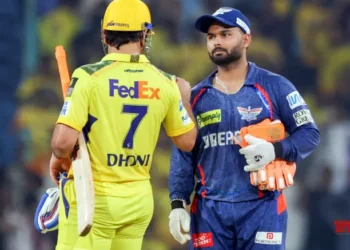Swedish auteur Ingmar Bergman had said, ‘For me, the human face is the most important subject of the cinema.
Having been cooped up for the length of the pandemic, it was an exaltation to re-enter the hallowed corridors of a theatre to experience a slice of Hollywood truly worth our time. Francis Ford Coppola’s timeless cinematic re-imagination of Mario Puzo’s novel, The Godfather turned 50 this year. Released in 1972, during the golden age of American films, the epic crime saga that chronicles the life and times of the mafioso clan, the Corleones, is a masterwork that laid the template for gangster films of the future.
You can take Mr Bergman’s word for it, or even mine for that matter – the large screen format is meant for watching actors tell us stories through their eyes. Undoubtedly, we appreciate the vistas and the panoramic framing of epics such as Lawrence of Arabia or The Good, The Bad and the Ugly, but what we really dig, is that borderline voyeuristic glimpse into the soul of another being, wondering what we’d do if we were in his or her shoes.
That’s how immersive a theatrical screening of The Godfather can be. The film was shot by a cinematographer who rewrote the grammar of light and shadows in modern filmmaking: Gordon Willis, or the Prince of Darkness, as he is known among his fans. Tales of Willis’s insistence on shooting his actors in shades of grey are the stuff Hollywood legends are made of. Then, there is the haunting theme scored by Nino Rota, a lullaby for many of us.
As for the film, what can one say about it that hasn’t been said already? It’s the ultimate anti-hero story where you’re rooting for the bad guys in spite of everything they do. The film critic Roger Ebert, while talking about Coppola’s film, asks his readers in his Great Films anthology, as to how many films exist where we remember the names of more than one character? That number gets chewed up when you consider The Godfather. Vito, Michael, Sonny, Tom Hagen, Fredo, Luca Brasi, Paulie, Apollonia, Sollozzo, McCluskey, Barzini, Moe Green, Johnny Fontane, and Clemenza have been part of our collective cultural consciousness for half a century now. And that’s just part one of the trilogy. Part two includes Hyman Roth… you get the drift.
If one were to ask how different was the experience of watching the film on the big screen, it might be hard to articulate what is essentially a highly intimate emotion. Even something as ordinary as footsteps sound menacing on the silver screen. And let’s not even get to the gunshots. Most of us have watched the film so many times, we’re almost dubbing for the actors in some of the most celebrated sequences. Some revelations take you by shock even after 50 years. The Genco Olive Oil company that operates as the front for the Corleones’ crime syndicate is all but once referenced visually in the entire film.
Even the opening monologue is delivered, not by the chief protagonists, but by Bonasera, who helps establish the character of the Godfather. The film is draped in darkness, but instead of taking away from the experience, it draws us closer, making us complicit in the crimes of this Italian family. We view the eclipse of Don Vito Corleone (Marlon Brando), who is filled with a melancholic contentment, stumbling in his garden, chasing after his grandson (who reads the funny papers).
We also witness the devolution of Michael Corleone (Al Pacino), from a reluctant outsider into the mafia kingpin, proving in a bravura sequence that revenge is a dish best served cold. The fact that this transpires during the baptism of his godson, while he’s asked to renounce Satan, no less, is part of the sublime pleasures of this cinematic touchstone. As far as the audience is concerned, it’s an offer we can’t refuse, not in 50 years, and not in a 100 years.






















